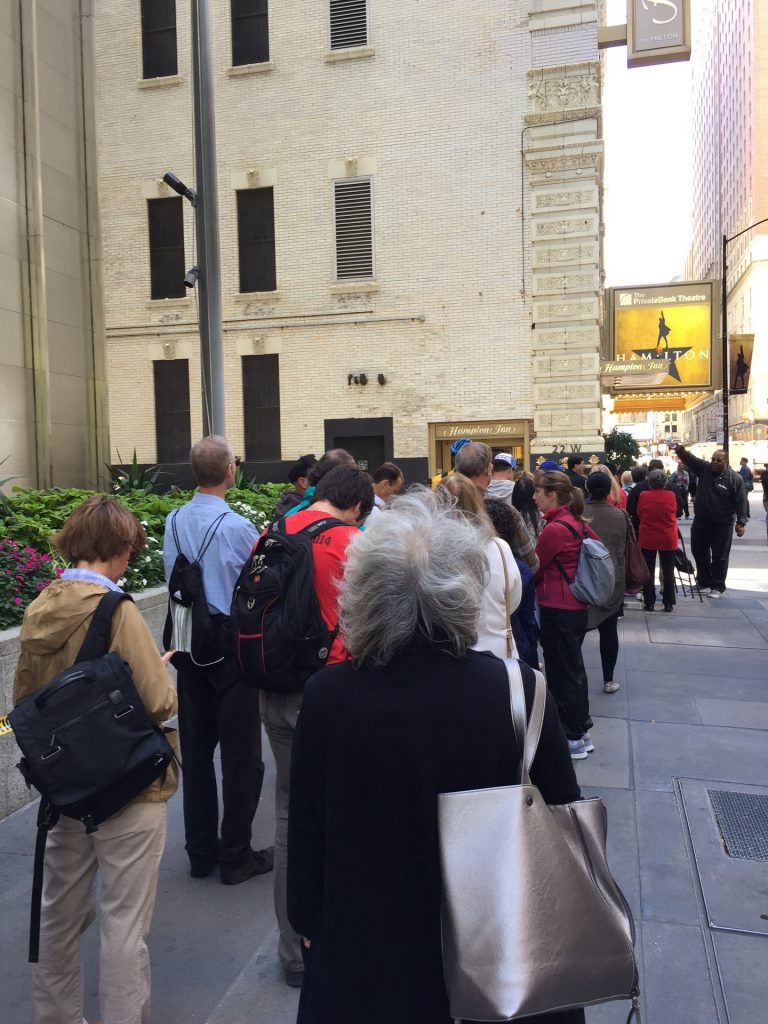Did Donald Trump do any better in this debate than in the last one?
Folks:
I was staying in the Trump Hotel in Chicago (magnificent) during the last presidential debate so I felt compelled to watch at least some (see Presidential Debate Thoughts: Did Trump miss some simple answers?). However, tonight I am home and reverting to my usual practice of not spending time watching or listening to politicians.
The transcript seems to indicate a collapse of American decorum, e.g., “Moderator: For the record, are you saying what you said on the bus 11 years ago that you did not kiss women without consent or grope women without consent.”
A few more things that have jumped out at me so far…
Hillary Clinton cites Michelle Obama, the spouse of a politician. This underlines the difference between the U.S. and parliamentary democracies (in which nobody is interested in what the spouse of the Prime Minister might have to say about politics; Germans aren’t listening to speeches by Angela Merkel’s husband and Margaret Thatcher’s husband was not cited by British politicians).
More discussion of Barack Obama’s birthplace. Can that be relevant to the challenge of growing our economy faster than our population, something that we’ve failed to do recently?
Finally a question that might matter: “The Affordable Care Act known as Obamacare, it is not affordable. Premiums have gone up. Deductibles have gone up. Copays have gone up. Prescriptions have gone up and the coverage has gone down. What will you do to bring the cost down, and make coverage better?”
Hillary says that she is happy that there are no limits to how much can be wasted on medical care for any given person (presumably most of what is spent is waste). Her idea for controlling the cost is to raise participation in this system from 90 percent of the U.S. population to 100 percent. Essentially she has no answer to the biggest economic problem facing the U.S. (i.e., that we spend 2-4X as much on health care as the high-growth and high-wealth economies, with no better results).
Donald Trump points out that “Obamacare will never work. It’s very bad. Very bad health insurance. Far too expensive. And not only expensive for the person that has it, unbelievably expensive for our country. One of the biggest line items very shortly. We have to repeal it. And replace it. With something absolutely much less expensive.” Absent spectacular economic growth, this is unarguably true.
Specific remedies? Donald Trump starts by suggesting repealing Obamacare, which leaves us with the old oligopolistic system. He then talks about giving block grants to states for Medicaid, which doesn’t address the bigger expense of Medicare.
On Muslim immigration: Hillary points out that Muhammad Ali was a successful citizen. Donald Trump says build a “safe zone” somewhere other than the U.S. for Muslims fleeing their civil wars and have the gulf Arabs pay for the zones. Trump says “hundreds of thousands of people coming in from Syria when we know nothing about them. We know nothing about their values and we know nothing about their love for our country.” Hillary responds that she has seen pictures of “children suffering in this catastrophic war.” She blames the Russians. [But isn’t the U.S. to blame as well? If we weren’t propping up various factions in Syria, mightn’t the government there, with Russian assistance, be able to win the civil war and restore order, if not democracy? Wars never lasted this long in the old days because someone would lose.]
Folks who watched instead of simply read the transcript: Is this debate going to change anything?
Full post, including comments


